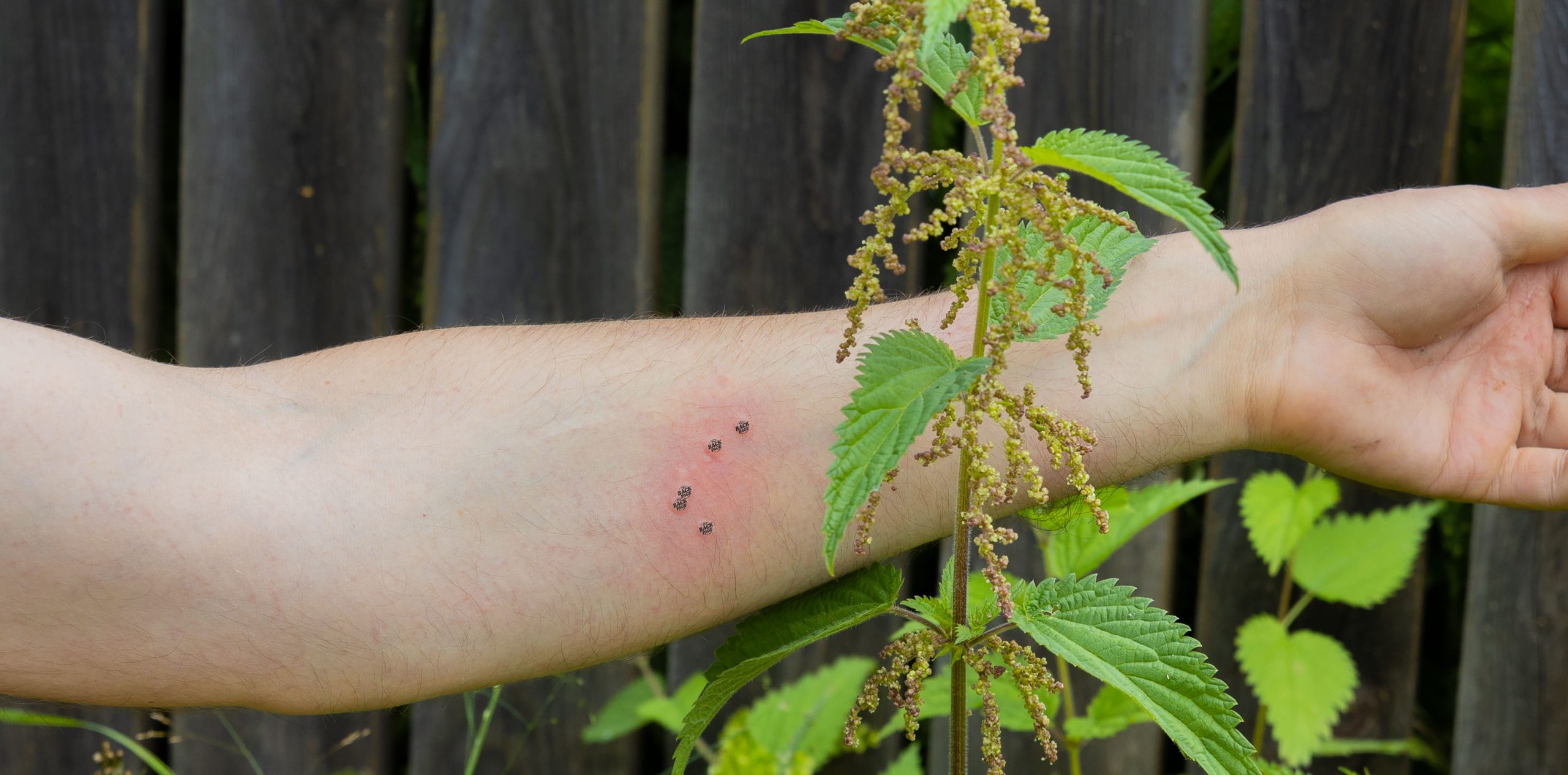Folk cure may reduce the ITCH and OUCH, or maybe not.
Your Back Page scribbler is a big admirer of folks who put themselves in harm’s way in the name of useful research.
He’s an even bigger fan of those intrepid souls who take the opportunity to have a bit of fun along the way.
Such as this team of UK emergency department doctors, who decided to test the efficacy of a well-known folk remedy for relieving the discomfort of an encounter with stinging nettles, i.e. rubbing the affected area with dock leaves.
Stinging nettles are commonly found in damp areas, as are dock leaves, so it makes sense that people would experiment with using a nearby leaf to counteract the burning and itching effects of the nettles. But is there an actual scientific basis for the dock-leaf remedy, or would any old green leaf be just as good? Or would doing nothing at all be just as effective?
To find out, a group of nine healthy ED doctors undertook a randomised, double blind, active placebo-controlled trial which they titled the Nettle-induced Urticaria Treatment Study, or NUTS for short.
In the study, published this week in the BMJ’s Emergency Medicine Journal, the doctors brushed the inside of a demarcated area of both forearms with two stems of recently picked nettle stem 10 times. They were then blindfolded.
After 60 seconds – the time it might take to find a dock leaf in real life – the participants rolled a die. If an odd number was rolled, two dock leaves were rubbed on the area for 60 seconds of their right arm and two lettuce leaves on their left for 60 seconds. For even numbers the application arms were reversed.
A lettuce leaf was chosen as the dummy treatment because it mimicked the physiological effect of the dock leaf and is of similar size, shape, and texture, but contains no anti-inflammatory or toxic properties.
The team then tracked their discomfort levels using what they called an Insult to Complete Healing (ITCH) score and counted the number of visible hives through an Observable Urticaria/Count of Hives (OUCH) score.
So while the doctors were clearly having a bit of a laugh with this study, the serious theory being tested was that it is the cooling and soothing effect of sap evaporating from a crushed leaf that brings relief to the nettle irritation, and that it’s not necessarily any particular properties of dock leaves that are in play.
And the findings? In a NUTS-shell, inconclusive.
Three participants correctly stated which arm had been treated with dock leaves, three were incorrect, and three were unable to say which treatment had been applied.
And while there was a statistically significant fall in ITCH score over time for both interventions, there was no significant difference between using dock leaves and lettuce leaves.
What’s more, the team said it was “possible that the same relief would have occurred with no treatment at all, and our study design does not permit us to conclude that either dock or lettuce is better than simply doing nothing”.
The authors said the small sample size also precluded any firm conclusions from being drawn and the trial was primarily carried out as part of a team-building exercise.
Helpfully though, they also added that when it comes to small children being stung by nettles, the option of doing nothing at all is a bad one. The placebo effect, after all, does have a solid evidence base.
Take the sting out of penny@medicalrepublic.com.au’s day by sending her soothing story tips.


